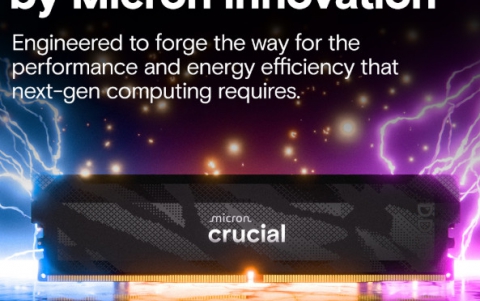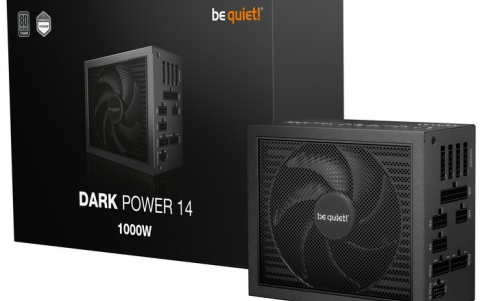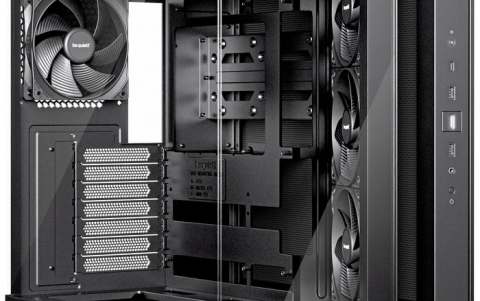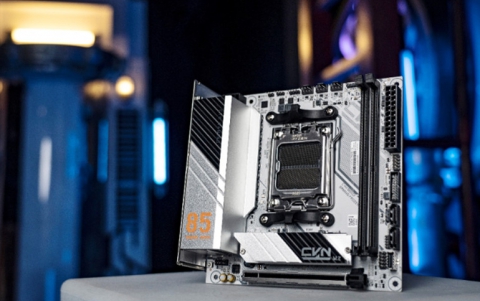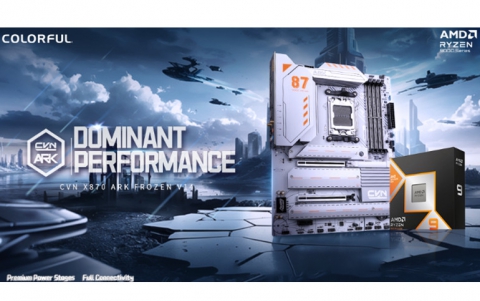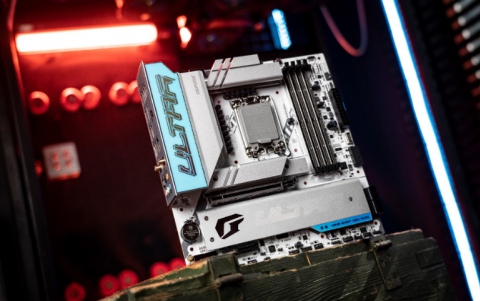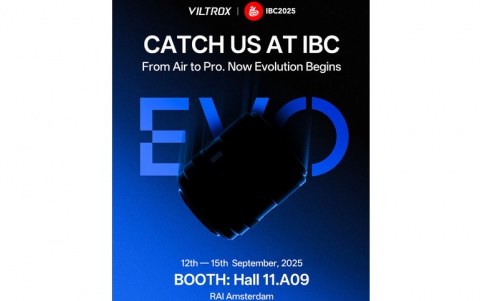40x CD-RW Roundup Vol1
2. Introduction - Page 2
Review Pages
2. Introduction - Page 2
3. Introduction - Page 3
4. Data Tests
5. CloneCD reading Tests
6. DAE Tests
7. CDR Tests - Page 1
8. CDR Tests - Page 2
9. CDR Tests - Page 3
10. Writing Quality of ASUS
11. Writing Quality of LiteOn
12. Writing Quality of Cendyne
13. RW-Packet Writing Tests
14. Conclusion
40x CD-RW Roundup Vol 1 - Page 2
- LiteOn LTR-40125S
 The
drive supports 40x writing (Z-CLV), 12x re-writing, 2MB Buffer and "SmartBurn"
as the main anti-buffer under run technology. The maximum reading speed of the
drive is 48x (CAV). The exact writing speeds are 4x, 8x, 12, 16x (CLV), 20x
(16-20x), 24x (16-24x), 32x (16-32x) and 40x (20-40x) (Z-CLV). The re-writing
speeds are 4x, 8x, 10x and 12x (CLV). The drive doesn't support Mt. Rainier
format and can author AudioCDs up to 40x recording speed.
The
drive supports 40x writing (Z-CLV), 12x re-writing, 2MB Buffer and "SmartBurn"
as the main anti-buffer under run technology. The maximum reading speed of the
drive is 48x (CAV). The exact writing speeds are 4x, 8x, 12, 16x (CLV), 20x
(16-20x), 24x (16-24x), 32x (16-32x) and 40x (20-40x) (Z-CLV). The re-writing
speeds are 4x, 8x, 10x and 12x (CLV). The drive doesn't support Mt. Rainier
format and can author AudioCDs up to 40x recording speed.
Ending, the drive supports all the known writing modes (DAO, SAO, TAO and RAW). LiteOn continues to use Mediatek's chipsets also for the 40x model.
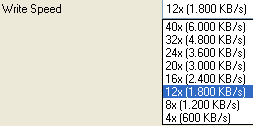
- LiteOn's 40x writing speed
LiteOn LTR-40125S supports the 40x writing speed with the use of the Z-CLV writing technology. Below is the Nero CD Speed writing graph, which illustrates the use of Zone-CLV writing technology:
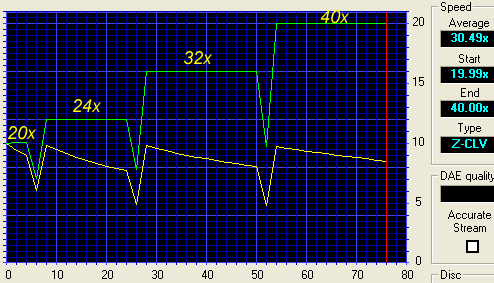
The 32x writing speed range is divided into 4 zones: The drive starts writing at 20x from lead-in till the 4mins, shifts up to 24x at 8mins, shifts up to 32x at 28mins and lastly shifts to 40x at 54mins and stays there until the end. The average recording speed is 30.49X and it's probably the faster 40x recorder as it currently stands.
- The package
 The
package supplied was the retail version. This included: the drive itself, a
quick set-up guide, 1 piece of LiteOn 80min CD-R blank (actual manufacturer
Ritek), 1 piece of LiteOn 80min 4-12x High-Speed RW blank (actual manufacturer
NAN-YA Plastics), audio cable and mounting screws. The software supplied with
the drive was Nero Burning ROM v5.5.7.1 and Ahead InCD v3.23 (for packet writing
use).
The
package supplied was the retail version. This included: the drive itself, a
quick set-up guide, 1 piece of LiteOn 80min CD-R blank (actual manufacturer
Ritek), 1 piece of LiteOn 80min 4-12x High-Speed RW blank (actual manufacturer
NAN-YA Plastics), audio cable and mounting screws. The software supplied with
the drive was Nero Burning ROM v5.5.7.1 and Ahead InCD v3.23 (for packet writing
use).
LiteOn and ASUS include now 80min HS-RW media, which is very positive. We don't know if LiteOn LTR-40125S includes 2years of warranty or not. Lastly, as the package says the drive is "XP" compatible which was confirmed from our test results.
The front of the drive is exactly the same as with the latest models. The
drive includes the LiteOn's website url, the HS-RW logo and the drive's features
(40x12x48x). You will also find only one led, the eject button and the headphone
input jack/volume selector:

In the back of the drive we will find the usual connectors (IDE interface, power), the jumpers for making the drive Master/Slave, the SPDIF output connector, 3 factory reserved jumpers and the analogue/digital output connectors.

- Installation
 LiteOn
LTR-40125S was installed as a Master in the secondary IDE BUS. The drive worked
in UDMA33 mode and after booting, identified itself as the "LITE-ON LTR-40125S".
We used WinXP for the recording/reading tests. DMA was automatically activated
from the operating system.
LiteOn
LTR-40125S was installed as a Master in the secondary IDE BUS. The drive worked
in UDMA33 mode and after booting, identified itself as the "LITE-ON LTR-40125S".
We used WinXP for the recording/reading tests. DMA was automatically activated
from the operating system.
The drive was a February 2002 model with firmware revision vZS08 installed. We used the latest Nero build (5.5.7.8), InCD (3.24) and CloneCD (3.3.4.1) for our recording tests.

If we use low quality media, the drive automatically lowers its recording speed down to (even down to 16x) before it starts writing:

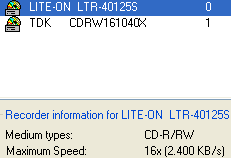
However inside the recording software (in our case Nero), you can de-activate the "Smart-Burn" function and write ANY media at ANY recording speed. After un-ticked "Smart-Burn", Nero will display the following message warning you about the possible problems that may occur:

Note that we do not suggest de-activating the "Smart-Burn" function because we noticed many problems even with 24x certified CDs. The problems occur when the drive shifts up to the 40x recording speed. The following graph displays the C1C2 error rate from Mitsui's SG Ultra media (16x certified) with "Smart-Burn" de-activated. The error rates at the 20x and 24x speed are low enough, but after the drive shifts up to 32x and especially at the 40x, the error rate are seriously increased.

Review Pages
2. Introduction - Page 2
3. Introduction - Page 3
4. Data Tests
5. CloneCD reading Tests
6. DAE Tests
7. CDR Tests - Page 1
8. CDR Tests - Page 2
9. CDR Tests - Page 3
10. Writing Quality of ASUS
11. Writing Quality of LiteOn
12. Writing Quality of Cendyne
13. RW-Packet Writing Tests
14. Conclusion

